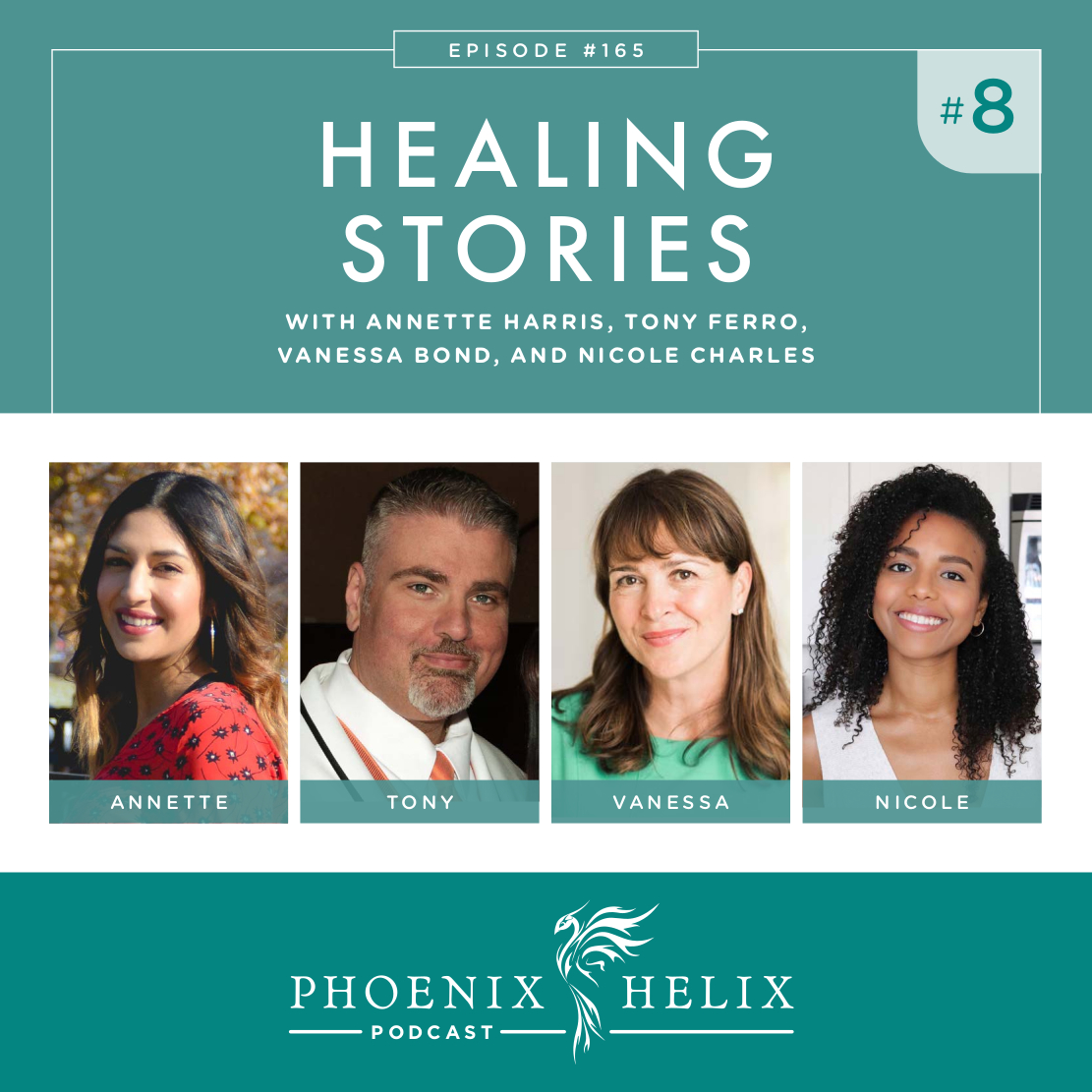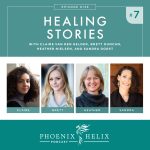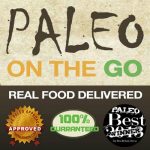
Real-Life Stories of Reclaiming Autoimmune Health
If you’re a regular listener of my podcast, you know that I start every year with a Healing Stories episode. It features back-to-back interviews with autoimmune warriors just like you! I ask them to share their journey from rock bottom to reclaiming a vital life. In this episode, we talk about ulcerative colitis, multiple sclerosis, CRMO, Graves’ disease, and also autoimmunity in general. Everyone’s story is unique, but we also have so much in common. Whatever your diagnosis, I hope these stories resonate and inspire.
Listen to the Show
- Subscribe to my podcast through your favorite podcast app: iTunes, Stitcher, Google, TuneIn, Spotify, Amazon, etc.
- You can also listen to the episode right here through the player below, and if you subscribe to my newsletter you’ll get notified of future episodes.
Podcast: Play in new window | Download
Show Notes
- Intro (0:00)
- Thank You to our Podcast Sponsor: Paleo on the Go (1:37)
- A frozen meal delivery service, 100% of their menu is compliant with the elimination phase of the paleo autoimmune protocol (AIP). They have over 5o items, including entrees, side dishes, broth, AIP-friendly bacon, and desserts.
- Use the code PHOENIX for 10% off your first order.
- Annette’s Healing Story (3:10)
- Annette Harris has ulcerative colitis (UC). She was diagnosed in 2012 and has had two major flares (one lasting 2 months) and one minor flare in the past 8 years. All three flares happened during very high-stress times in her life, and correspondingly high self-criticism.
- She had IBS symptoms long before she developed IBD. They are often confused with each other but are actually very different. IBS = Irritable Bowel Syndrome, and while it has some overlapping symptoms with IBD (pain, bloating, and diarrhea), it’s not an autoimmune disease. IBD = Inflammatory Bowel Disease, a category of autoimmune disease that includes ulcerative colitis and Crohn’s disease. IBD is a more serious condition, causing damage to the gut tissue.
- During her worst flares, Annette experienced frequent diarrhea which woke her 5-6 times a night, and required stopping at gas stations on her way to and from work. Her stools were bloody which caused anemia. She felt exhausted.
- Now, she’s in remission and hasn’t had a flare in three years. She has no UC symptoms, but does occasionally get mild IBS symptoms (bloating), especially now during her pregnancy. But it’s nothing compared to her symptoms at their worst.
- While food does have an influence on Annette’s symptoms, even with a perfect diet, stress can cause flares. She was following a paleo keto diet when her worst flare happened. She experimented with many diets before finding the blend that works best for her. She now follows a paleo template with plenty of fruits and vegetables, but she limits starch, nuts, and eggs, because those foods cause her to have gut inflammation. Recently, she started incorporating Intuitive Eating into her approach to food. It doesn’t mean she can eat everything, but it does mean she restricts herself less, and enjoys her food more.
- In terms of lifestyle, overcoming perfectionism and learning self-compassion have been incredibly important. Therapy has also made a big difference, giving her tools for managing anxiety and responding to stress.
- Shortly after being diagnosed with UC, she spent thousands of dollars on functional medicine testing and consultations, none of which helped. It was the diet and lifestyle changes that made the biggest difference in her health. Her recommendation to people newly diagnosed is to try diet and lifestyle first, only troubleshooting through functional medicine later if needed.
- Medication decisions: Annette takes prednisone tapers when she has a flare to help her recover, but so far hasn’t needed any year-round medication. She credits a high-dose probiotic for helping her maintain remission for the past three years. It’s called Visbiome (formerly sold under the name VSL #3) and has been specifically researched to benefit patients with ulcerative colitis.
- Update 2023: Annette has retired her coaching practice.
- Resources:
- Tony’s Healing Story (21:28)
- Tony Ferro has multiple sclerosis. When his symptoms first appeared in 2008, he was in denial and didn’t want to believe anything was seriously wrong. By the time he got a diagnosis in 2012, his symptoms were quite severe.
- At his worst, he felt numbness from the neck down, and he couldn’t feel his feet at all, making it hard to walk. He had a symptom called “the MS hug” – extreme tightness around his midsection. He completely lost the use of his right hand. He had poor depth perception which made many activities of daily life difficult. He also experienced depression, extreme fatigue, and brain fog. That was his baseline, and on top of that, he flared twice a year like clockwork. Each time, the flare hit like a hurricane.
- Now, he is 95% symptom-free. He hasn’t had a flare in over two years, and the only symptom remaining is some slight numbness and tingling in his hands and feet. He also lost 160 lbs. after changing his lifestyle. (He weighed 500 lbs. at diagnosis.)
- The Wahls Protocol is behind those improvements. When researching MS to try to understand his condition better, he discovered Terry Wahls’ TED Talk. He started with the Wahls Diet Level 1 (gluten-free, diary-free, sugar-free), and eventually progressed to Level 2 (paleo) and Level 3 (ketogenic paleo). All three levels focus on nutrient-density. Now, he eats a paleo diet year-round, and does keto short-term 2-3 times a year. Tony also discovered he has oxalate sensitivity which led to gout in his hands, so he personalized his diet to be low-oxalate as well.
- When Tony first started making diet and lifestyle changes, he found himself falling back into old habits. It was a huge change for him on every level, and it was difficult. But his body flared whenever he strayed from the Wahls Protocol. So now, he prioritizes his long-term health and happiness over short-term comfort.
- Besides diet, the lifestyle changes that made a big difference for Tony are movement, stress reduction, sleep quality, and self-love and acceptance.
- Tony also worked with a naturopath when he was first diagnosed, which he found very helpful.
- Medication decisions: He chose not to take immunosuppressant medication.
- Now, Tony says that MS is the best thing that ever happened to him, but it took time to get to that point. He now feels blessed to the journey and has a mind-body-spirit approach to healing.
- Tony runs a charity called ChangeMS in Buffalo, NY. He’s also a nutrition coach and a Wahls Certified Health Professional. He loves working with people 1:1. You can connect with him through the Change MS website.
- Resource: The Wahls Protocol Series.
- Thank You to Our Podcast Sponsor: ShopAIP (41:18)
- I collaborated with ShopAIP to create a Phoenix Helix Bundle, which contains some of my favorite AIP pantry items. It’s a great way to sample their products!
- ShopAIP is an online store dedicated to the Paleo Autoimmune Protocol. With hundreds of items for the elimination phase of the AIP, and new products labeled by reintroduction category as well. You can find protein bars, sauces and condiments, AIP-friendly spices, cooking and baking ingredients, delicious snacks, non-toxic skincare, and more.
- If you’re a first-time customer, use the code PHOENIX for 10% off your order. Purchase here.
- Vanessa’s Daughter’s Healing Story (42:52)
- Vanessa Bond’s daughter has CRMO (chronic recurrent multifocal osteomyelitis), an auto-inflammatory disease that attacks the long bones in children. It’s a rare disease that many pediatricians don’t know about, so it is often misdiagnosed. It involves lesions on the bone that can be seen in bone scans and MRI’s but might be missed on x-rays. Vanessa was lucky that her daughter was diagnosed accurately and quickly. She was 11 years old.
- When her daughter’s symptoms were at their worst, her flares were painful enough that she would spend those days in bed, but she was able to manage her pain with ice, supplements, and naproxen. Some children have pain so high that it’s not manageable, and some doctors don’t believe their pain is real.
- The hardest part for her daughter was the emotional piece. She felt like her body had betrayed her, and that she lost her childhood. Talk therapy was very helpful – it gave her a place to share openly without worrying about her parents’ emotions, and the therapist also gave her tools to help her process and reframe her experience.
- A modified AIP/Paleo diet was very helpful in reducing inflammation after her diagnosis. They chose to include almonds and eggs in their version of the diet, so her daughter could continue to enjoy paleo baking. Now, 2 years after diagnosis, her daughter has successfully reintroduced everything but gluten. She stays 100% gluten-free because she has a genetic marker for celiac disease.
- In terms of lifestyle, in addition to talk therapy, creative outlets for her emotions (like journaling and music) have been very helpful. Vanessa also focused on empowering her daughter. As a parent, Vanessa said there’s a shift as your children get older where you go from telling them what to do to teaching them how to become. Vanessa made sure her daughter had excellent care and support, but also taught her daughter resilience and how to care for herself.
- In addition to working with a rheumatologist, they also worked with an integrative medicine physician. Vanessa took all the functional medicine tests alongside her daughter, so her daughter wouldn’t feel alone. The tests revealed that her daughter had a parasite and pathogenic bacteria. Treatment dramatically reduced her inflammation. Now, she rarely has flares.
- Medication decisions: her daughter takes naproxen during flares but hasn’t needed any other medications. She does take daily supplements: fish oil, magnesium, probiotics and vitamins B, D and K2.
- Advice for parents: Join online groups of parents with children with the same diagnosis. They can offer great support and advice. While it can feel overwhelming to consider changing your child’s diet when life is already stressful, food fuels cellular health and helps kids thrive. The sooner you make changes, the sooner your child and entire family can benefit. Also involve your child in the process. They already feel like their body is out of control, so they want control of something in their life. That can be the diet and lifestyle changes that you implement together as a family. And remember, baby steps are cumulative.
- Vanessa is a holistic nutritionist who specializes in helping autoimmune families. You can connect with her through her website: Bond with Health.
- Nicole’s Healing Story (1:00:57)
- Nicole Charles has Graves’ disease. She developed it during a high-stress time in her life (graduate school) when she was working so hard she only slept six hours a night. At first, she thought her symptoms were simply stress and anxiety, and she tried to power through.
- At her worst, she experienced a rapid heartbeat (140 beats per minute even when lying down), hand tremors, an insatiable appetite, and rapid weight loss. She was eating 4-5 full meals a day (plus snacks) and still lost 15 pounds. Graves’ disease is often described as if the body becomes a race car with the pedal to the metal. She went to the doctor and was lucky to get a quick diagnosis. She was referred to an endocrinologist and started anti-thyroid medication.
- The medication worked to reduce her symptoms, but she didn’t change her lifestyle, and continued to sacrifice sleep and work overtime. It wasn’t until a few years later that she started focusing on her overall health, and she found the paleo autoimmune protocol, yoga, reiki, and mindfulness. Now, a slower pace and focus on a healthy diet and lifestyle are cornerstones of her healing journey. She still works in academia as a professor, but she has boundaries with work to maintain time in her life for sleep and self-care. One example is that she doesn’t respond to emails in the evening or on the weekends, and she lets her students and colleagues know this. She encourages them to do the same.
- In terms of diet, she went gluten-free first, and then gave up alcohol, and then went AIP. The results were dramatic. It improved her sleep quality, mood, and mental clarity, eliminating brain fog she didn’t even know was there. Then, during reintroductions, her body felt so clear that it was very easy to notice if she reacted negatively to a food. She feels like the volume of her inner voice has been turned up, and her body no longer needs to yell to get her attention.
- Nicole also sees a naturopath and takes the herbal supplements alongside her medication.
- Medication decisions: Nicole started anti-thyroid medication when she was diagnosed. She over-responded at first, becoming hypothyroid, but eventually found the right balance. Now, she has no symptoms. Her dose did reduce dramatically after going AIP. Since the dose is so small and she’s experiencing no side effects, she’s continuing the medication to maintain that balance.
- Nicole has a popular Paleo AIP recipe blog called Heal Me Delicious.
- Resource Podcasts:
- Other Healing Stories Episodes (1:16:03)
- This is the 8th Healing Stories episode, and you can find the others here. I feature a wide variety of diagnoses, but even if your diagnosis isn’t featured, please know that these stories still apply to you. Autoimmune diseases have much in common, which is why they are treated similarly by conventional medicine, and why the paleo autoimmune protocol benefits so many.
- Many of my podcast guests I meet through social media. Be sure to follow me on Instagram and Facebook, to join the conversation.
- Outro (1:17:28)
- Eileen (your podcast host) is the author of multiple books, written to help people thrive with autoimmune disease. Learn more on the Books Page.
- If you like this podcast, follow or subscribe through your favorite podcast app. You can also subscribe to Eileen’s biweekly newsletter.
- Check out the entire archive of podcast episodes.
You May Also Be Interested In
Spreading the Word
If you like the podcast, please leave a positive review in iTunes. It would mean the world to me, and also helps others find the podcast. Here are some quick instructions using your iPhone:
- If you are already subscribed to my podcast: (1) Click the purple podcast icon. (2) At the bottom of the screen, click Library. (3) At the top of the screen, click Shows. (4) Click the Phoenix Helix podcast image. (5) Scroll down the page, and you’ll see Ratings and Reviews. Scroll down a little bit more and click on Write a Review. This will bring up the review screen. Tap 5 stars (if you love the podcast), and then click in the title box, and it will bring up the keyboard. Enter a title and short review. (6) Click Send in the upper right corner. (7) Thank you! Positive reviews give the podcast a higher search ranking in iTunes, helping people find it and letting them know it’s a quality podcast and worth their time to listen.
- If you haven’t subscribed to my podcast: (1) Click the purple podcast icon. (2) In the lower right corner, click the magnifying class. (3) Type Phoenix Helix in the search box. (4) Click the podcast cover in the Show list. (5) If you’d like to subscribe, click the + sign at the top of the screen. (6) To write a review, scroll down the page, and you’ll see Ratings and Reviews. Scroll down a little bit more and click on Write a Review. This will bring up the review screen. Tap 5 stars (if you love the podcast), and then click in the title box, and it will bring up the keyboard. Enter a title and short review. (7) Click Send in the upper right corner. (8) Thank you! Positive reviews give the podcast a higher search ranking in iTunes, helping people find it and letting them know it’s a quality podcast and worth their time to listen.







